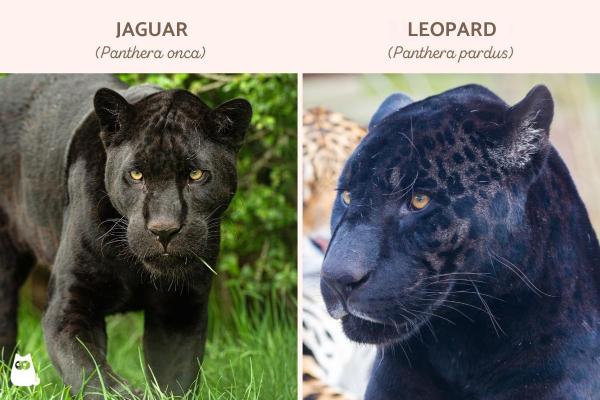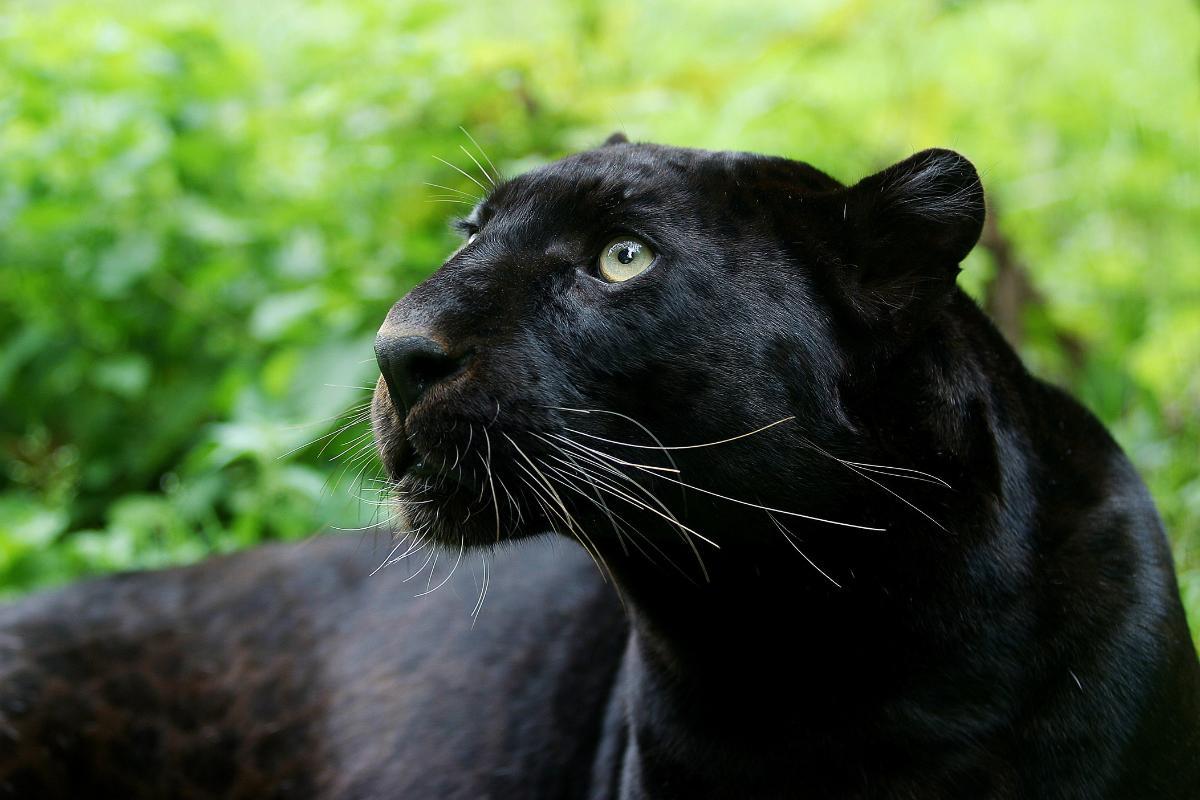What Animal Is a Black Panther?


Black panthers are animals which are culturally important worldwide. Symbols of strength, power and pride, many of us have a clear image of this big cat. Despite this, it might be difficult for some of us to answer what animal is a black panther?
The first thing to know is that a black panther is not actually a separate species of big cat. Neither is it a term which refers to only one big cat species, since it can actually a descriptor which applies to both jaguars (Panthera onca) and leopards (Panthera pardus). Specifically, it refers to members of this felid species which have a distinctive melanistic trait. AnimalWised explains more about what is a black panther animal so you can have a better idea.
What animal is a black panther?
The black panther is not a unique species or a specific type of feline, but rather a variant of two types of big cat species. Both belong to the genus Panthera within the family Felidae. This genus contains the largest extant members of cats, including lions and tigers. Those which can be considered black panthers are:
- Jaguar (Panthera onca)
- Leopard (Panthera pardus)
There is some confusion over what is a panther. While it can loosely be used for all members of the genus Panthera, we only really use it to describe the jaguar and leopard. Some people use it to describe certain types of cougar (Puma concolor). although this is not widely accepted.
Of the leopards and jaguars, only those which exhibit melanism can be described as black panthers. These are animals which have a genetic mutation which causes and excess of dark pigmentation in their fur. The level of black pigmentation in black panther animals can vary. While some can appear completely black, you should see the characteristic spots or rosettes of these panther species if you look closely.
Whether a black panther is a jaguar or a leopard will largely depend on where you are. In the Americas, the only black panther you will see is the jaguar. The leopard is the only black panther animal you will see in Asia and Africa. While they are different species, they have the same genetic trait. This phenomenon not only gives them their distinctive black color, but also offers them evolutionary advantages, such as excellent camouflage in the jungle and at night.
Although they have similarities, you can learn about the differences between jaguars, leopards and cheetahs in our related guide.

Characteristics of the black panther
Now that we know that the black panther animal is a melanistic variant of the big cat jaguar and leopard species, we can find out about their most characteristic features:
- Dark fur: black panthers have many fascinating features that make them stand out among other big cats. The most distinctive feature is their dark fur. This is due to melanism, a genetic trait that is more common in dense jungle regions where light is limited. This fur is not completely black, as it retains the characteristic spots of jaguars or leopards, but these are less visible to varying degrees.
- Strength, agility and speed: both jaguars and leopards are extremely strong and agile predators. Black panthers inherit these abilities, making them excellent hunters. They can run at high speed over short distances, climb trees with ease and swim in water, making them very versatile predators.
- Size: the size of the black panther varies depending on whether it is a jaguar or a leopard. Jaguars are larger and more robust, weighing between 110-220 lb (50-100 kg), while leopards are usually smaller, with an average weight of 66-198 lb (30-90 kg).
The black panther has highly developed senses. Its night vision is exceptional, allowing it to hunt with great precision at night. It also has a keen sense of smell and sensitive hearing that help it detect prey in its environment.
Discover where jaguars live in the world with our related article.

What does a black panther animal eat?
The black panther diet is varied and depends on its habitat. This is because the available prey will differ in the Americas compared to Asia and Africa. We can say that all black panthers are obligate carnivores, requiring animal protein to survive. While they prefer medium-to-large sized prey animals, they will supplement their diet with smaller animals when necessary. Among the most common prey animals of black panthers are:
- Deer
- Wild boars
- Monkeys
- Capybaras
- Antelopes
Some bird species are also easy prey for the black panther, especially those that nest on the ground. They also hunt reptiles such as iguanas and snakes in some regions. Others that live near rivers or lakes may include fish in their diet.
They are opportunistic hunters that stealthily stalk their prey before attacking. Thanks to their dark fur, they have an advantage when camouflaging themselves at night or in dense habitats, managing to approach undetected. They generally prefer to eat a large amount at least once a week, supplemented with smaller amounts on a daily basis.
Learn more about what some types of black panther eat with our article about the jaguar wild diet.

Where does the black panther live?
Black panthers have a wide geographic distribution, depending on whether we are talking about melanistic jaguars or leopards. Their habitats are in regions where they can hunt and hide easily. Being an animal of the Americas, melanistic jaguars mainly inhabit dense tropical forests such as the Amazon, the Pantanal in South America and parts of Central America. These areas offer an ideal environment for camouflage and hunting.
In Africa, melanistic leopards are rare, but can be found in forested and mountainous regions. Although they are more common in areas with dense vegetation, they can also survive in savannahs. In Asia, melanistic leopards are found in countries such as India, Sri Lanka and Thailand. They prefer tropical and subtropical forests where the shadows of trees enhance their camouflage.
In some cases, black panthers may live in mountainous regions, as long as there is sufficient vegetation cover for hunting and shelter.
Is the black panther in danger of extinction?
The conservation of black panthers depends on the status of jaguar and leopard populations in general. Both species face similar threats that put their survival at risk.
Deforestation and the expansion of urban and agricultural areas have drastically reduced the territories where these felines can live and hunt. This particularly affects jaguars in America and leopards in Asia. Like other big cat species, black panthers are victims of poaching. In fact, their rarity makes them a particular target for the black market. Others are killed as they pose a threat to local livestock.
Although black panthers are not classified as a separate species, conservation programs for jaguars and leopards include efforts to protect melanistic specimens. Nature reserves, reforestation projects and anti-hunting laws are some of the measures in place to ensure their survival.
Now you know what kind of animal is a black panther, you can learn more with our article on facts about the black panther you didn't already know.
If you want to read similar articles to What Animal Is a Black Panther?, we recommend you visit our Facts about the animal kingdom category.
- Chew, S. Y. (2019). Natural history of the leopard (Panthera pardus) in Peninsular Malaysia. Malayan Nature Journal, 71(2), 127–137.
- da Silva, L. G. (2017). Ecology and evolution of melanism in big cats: Case study with black leopards and jaguars. In A. B. Shrivastav & K. P. Singh (Eds.), Big Cats (pp. 93–110). IntechOpen.
https://doi.org/10.5772/intechopen.69558 - Schneider, A., David, V. A., Johnson, W. E., O'Brien, S. J., Barsh, G. S., Menotti-Raymond, M., & Eizirik, E. (2012). How the leopard hides its spots: ASIP mutations and melanism in wild cats. PLOS ONE, 7(12), e50386.
https://doi.org/10.1371/journal.pone.0050386








